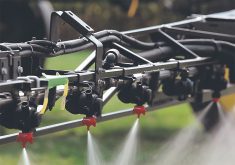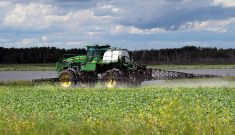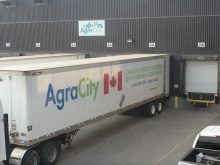If one took Farm Business Network’s price transparency process down to its very basics, it could be called an online crowd-sourcing tool for the lowest — and highest — crop protection and seed prices in Canada.
In short, it runs on farmer power. The more invoices farmers submit when they buy these products, the more they know about their best deals regionally, provincially and nationally. They will also likely see significant price variance.
FBN — a U.S.-based farm analysis company that also sells crop protection products — has been providing this kind of scrutiny for Canadian producers in recent years, said Charles Baron, its chief marketing officer and co-founder.
Read Also

Gene editing digs deeper space in Canadian plant breeding
More Canadian research into crop variety development is incorporating gene editing, and one researcher notes that Canada’s regulatory approach to gene editing will help drive innovation
“We’ve always found that there are huge variances in the prices farmers pay for major inputs — especially crop protection chemicals — across these markets,” he said.
This variance adds up to a lot more than a few dollars and cents. In the United States, FBN found as much as a 470 per cent difference among some popular ag chemical products.
In Canada, the network — through its more than 9,000 member farms — discovered a low price of $9.03 per litre compared to a high of $15.75 per litre for Liberty 150 SN herbicide: a 74 per cent gap. Farmers don’t see these differences because prices are not made widely available, said Baron.
“In most cases, prices are hidden. They are not posted online. There’s not a standard price sheet that’s widely available. What you then see is huge variances between states or provinces and what people are paying for the identical product,” he said.
“Very commonly on big products like glufosinate or Roundup, you could have a two times difference or a three times difference in what a farmer was paying.”
High crop input prices were the bane of many farmers during the COVID-19 pandemic and afterward as supply chains slowly mended. However, prices for raw (or technical) ingredients such as pesticide actives have declined steadily since their U.S. COVID-era peak in 2022, said Baron.
“In the United States we’re at historic low levels on pricing on some major actives like glufosinate and glyphosate, (which are) down near its historical standard, which is around the $12 to $14 per gallon range.”
Despite lower prices, there continues to be high variation in crop protection products in both the Canada and the U.S.
“So there remain substantial savings available to producers from sharpening their pencils and purchasing more intelligently,” said Baron.
“Part of FBN’s mission is creating more profitability for growers through the power of our network and creating a more transparent, fair, better way for farmers to do the commerce they need to run their farms.”
The first step in unlocking FBN’s chemical and seed data is for farmers to provide some of their own. Not a lot — just a non-FBN invoice with three ag chemical or seed items that become aggregated with existing data. These can be uploaded directly to the FBN site or sent by email as a photo. That’s all producers have to do to become a member, said Baron.
There are a few ways to access this data once that step has been completed. One is to visit the dashboard at fbn.com (farmers may want to check to make sure they’re going to the Canadian site) and click on an FBN product (FBN sells pesticides in Canada but not seed).
“Farmers can come in and see any number of products that we’re merchandising in Canada and if you click on one like Smoke 540 — that’s our glyphosate — then scroll down to the price transparency tab. It will actually start showing you the market averages that we’re seeing from pricing that growers are sharing and other public pricing.”
The tool also offers historical trends. As an example, Baron selected the price trend of glufosinate in Canada over the past five years.
“You can see the average hover very close to around $8 per litre. It spiked in early 2022 or 2023 and then it’s come back down to near historic levels. And then (you see) FBN selling down here at $5.55 per litre today.”
Baron does not see a conflict of interest in selling FBN’s own ag chemical products while offering farmers a price comparison platform for other company’s brands and actives. The invoices farmers provide lend FBN’s measurements authenticity, he said, and often the system highlights lower prices for chemical products than those of FBN.
“This is invoice data. It’s not bids. We don’t accept farmers scribbling something on a piece of paper and saying, ‘I’m getting quoted X.’ It has to be an actual invoice.
“This has been our data quality process that we’ve managed since 2017, and that creates a high degree of trust and security around that data and that price information.”
Farmers don’t have to buy product from FBN for this system to work for them, he said.
“Every farm in the country isn’t buying from FBN, but we are selling to many thousands, and so any farm can benefit from this information, whether or not they have bought from FBN or are buying from FBN.
“And the benefits of that are then all farmers get more competitive pricing in the market when they have better information as to what fair market prices are.”
















